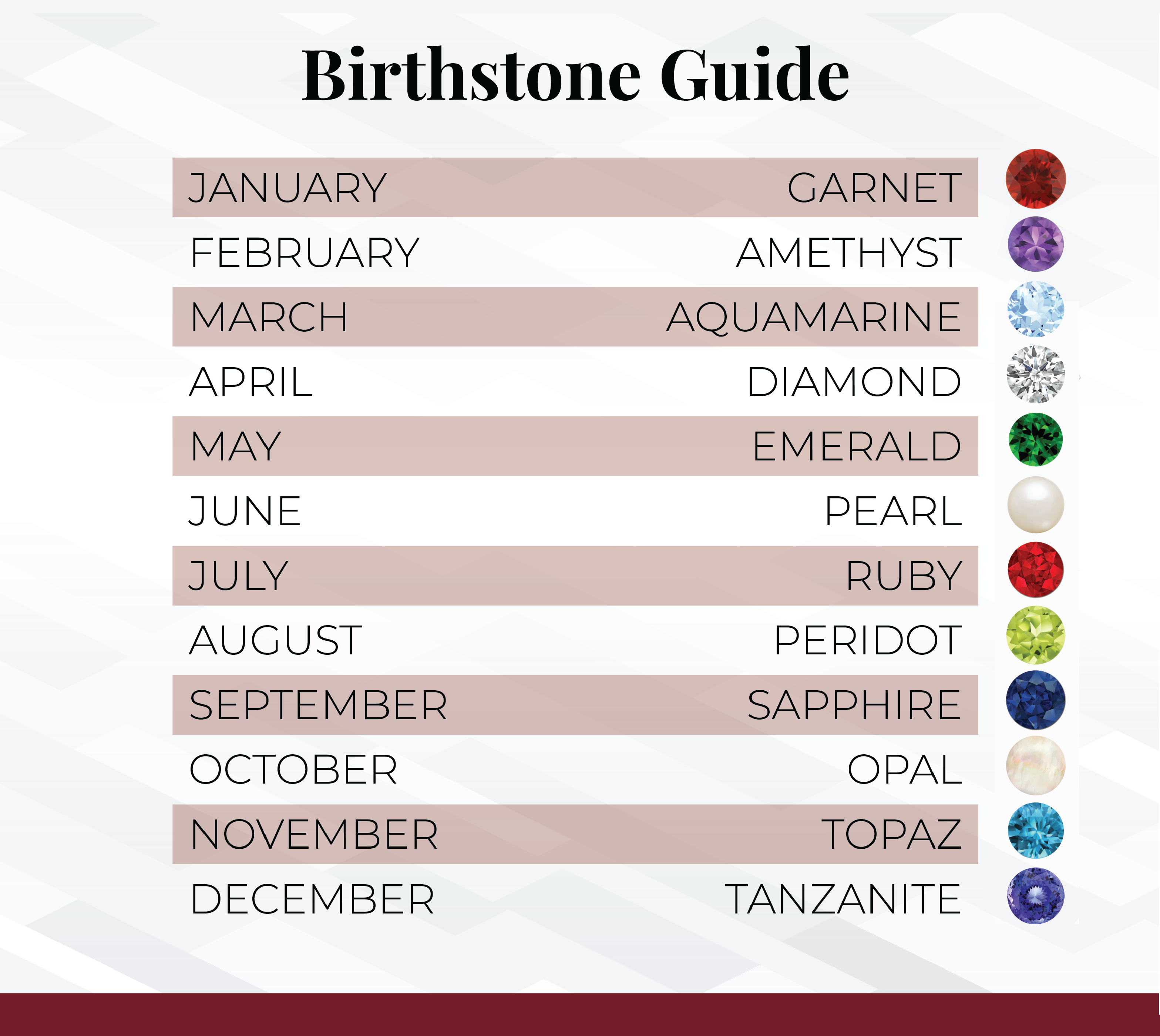It’s no secret that we’re crazy about diamonds. But did you know we offer many other popular gems, too? From rubies and sapphires to blue topaz, amethyst and more, there’s no shortage of sparkling gems at Shane Co.
Of course, of all the beautiful gems out there, few are more personally meaningful than those that represent one’s birth month. With this in mind, we decided to dedicate a study to birthstones. We used the latest CDC natality data to determine how many people are born each month in every state. From there, we determined the most common and rarest birthstones across the country. Additionally, we used our gemstone prices to determine which states have the most expensive birthstones of all.
As for each month’s designated birthstone, we used the most commonly accepted combinations, as shown in the key below.

Curious to see where your birthstone fell on the map? Read on!
The Most Common Birthstones in Every State

In terms of the most common birthstones across the country, peridot, August’s official birthstone, ruled the map. Notably, this gorgeous green gem is the top stone in California, New York, and 38 states in between.
After peridot, emerald (May) and ruby (July) are the second and third most common birthstones, accounting for a total of eight states.
Sapphire, September’s official birthstone, is the most common birthstone in New Mexico and North Dakota, while October’s opal reigns supreme in Delaware.

So, which states have the priciest birthstones? If you know anything about the cost of precious gemstones, you won’t be surprised to learn that, at a whopping $3,000 per carat, the ruby states (Nebraska, Vermont, and Washington) take the cake. Although diamond is typically regarded as the most expensive birthstone, April babies did not show up as the most popular in any of the U.S. states.
At a cost of $1,750 per carat, the sapphire states (New Mexico and North Dakota) aren’t too far behind.
Fortunately for most people, at only $195 per carat, the most common birthstone in the country, peridot, won’t break the bank.

Given that there are an overwhelming number of August birthdays in America, we decided to look into the second most common birthstone in every state, too. Interestingly, the priciest birthstone on our birthstone cost map also happens to be the second most common birthstone in a grand total of 19 states.
The Least Common Birthstone in Every State

Wondering which birthstone is rarest? In this category, amethyst won the majority of states — 38 to be exact. Needless to say, if you were born in February, you should feel pretty special. February babies have the rarest birthstone of all.
Diamond (April) is the rarest birthstone in a total of six states, while topaz (November) is the rarest birthstone in Montana, Wyoming, and Rhode Island. Emerald (May), sapphire (September), and pearl (June) are the rarest birthstones in Texas, Washington, and Utah, respectively.
The Most Common Birthstones in the U.S.

To summarize, peridot is the most common stone in the country by an impressive 35-state margin. Though they may try, the other stones simply can’t compete. Which is probably for the best, given that it’s one of the more affordable birthstones out there. If you’re hoping for jewelry that includes your birthstone, check out our gemstone jewelry to find the perfect match. Or, build a ring from the stone up by shopping for our gemstone engagement rings.
Now that you have the scoop on all things birthstone-related, why not let your friends join in the fun? How does the commonality of your birthstone compare to those in your social circle? Be sure to use the share buttons below to loop your friends into the conversation on Facebook or Twitter (@shanecompany).



As an Aquarius I love having a rare birthstone.
Omg, I’m an Aquarius to
me too
I’m also an Aquarius! Jan 28th❤️
This makes sense! February has the least amount of days. Almost all the most common birth months are 31-day months, and almost all the least common ones are 30-day months. With so many people born daily, even one day can make a big difference!
Wow, I am also an Aquarius born on 2/11. I would have never guessed that my birthstone, the amethyst, was the most rare but just the opposite! Very cool! (Please use this comment due to typo in first one, also today.)
my birthstone is diamond
Yay!
Is this article about the number of people born each month (monthly gemstones are slightly different than astrological signs since our calendar includes 2 months in a sun sign) the rarity of each type of stone mentioned or the purchase of listed stones per capita in each state? I ask because it seems the writer is describing amethysts as the “most rare” of these semi-precious -precious gems but the comments suggest it is simply a way to list the number of births/month amongst persons living in the U.S. Maybe I’m making more out of it but the question was proposed to me after a student had this result pop up first when research a geology question and I don’t want to say they were misinformed if it is just a matter of syntax used.
If it is about purchases per capita this is very interesting!
Thank you either way,
Cheers!
Great question, here’s how the data was put together.
If you have any other questions, we’d love to answer those for you or the students. Feel free to reach out anytime if yall have any questions in the future.